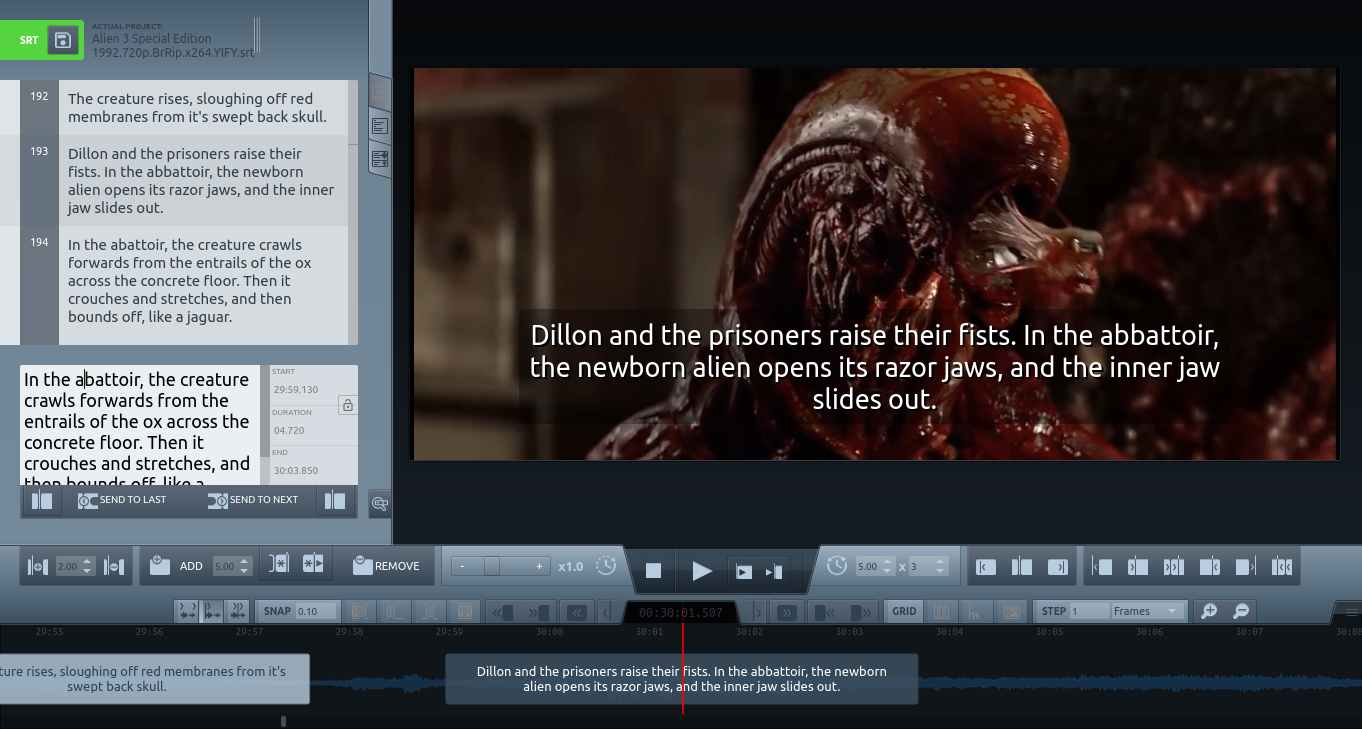A little slow going, and I lost a week and a bit due to travel. I'm now 45 minutes in.
It strikes me that I've never actually discussed the
how I'm actually doing what I'm doing. I've never posted my set up.
Fundamentally, audio description is someone narrating the movie in between dialogue and important sound, so it follows that writing audio description requires defining a video in-point, an out-point, and the text to be narrated timed to fit that gap.
For example, the creature-birth/funeral happens around the half-hour mark of the Assembly Cut:
Quote00:29:59,130 --> 00:30:03,850
Dillon and the prisoners raise their fists. In the abattoir, the newborn alien opens its razor jaws, and the inner jaw slides out.
(This is an unedited cue. "Razor jaws"? That's what revision is for. Also not spellchecked yet, and it sorely needs it).
What's fantastic about that is that it's functionally the same process as adding subtitles! These two activities map cleanly onto each other. The difference is that with subtitling, you subtitle when people are talking and with audio description, you write when people are not talking.
The upshot of this is you can use
subtitle software to
write audio description!
And there are loads of free subtitle editors.
I use "subtitld" which has a nice interface, and works on Linux, which is my native ecosystem.

The interface, broken down, is:
- The video on the right
- The time-line and audio wave-form at the bottom, along with the cues.
- On the left is a list of all the cues
- At the bottom, an editing pane for the currently selected cue.
Pretty much you identify a gap in the dialogue, make a new cue, drag it so it doesn't extend over any dialogue or essential sound, and then start typing.
Then, 7,500 words later, boom! You have an Alien 3 script.
